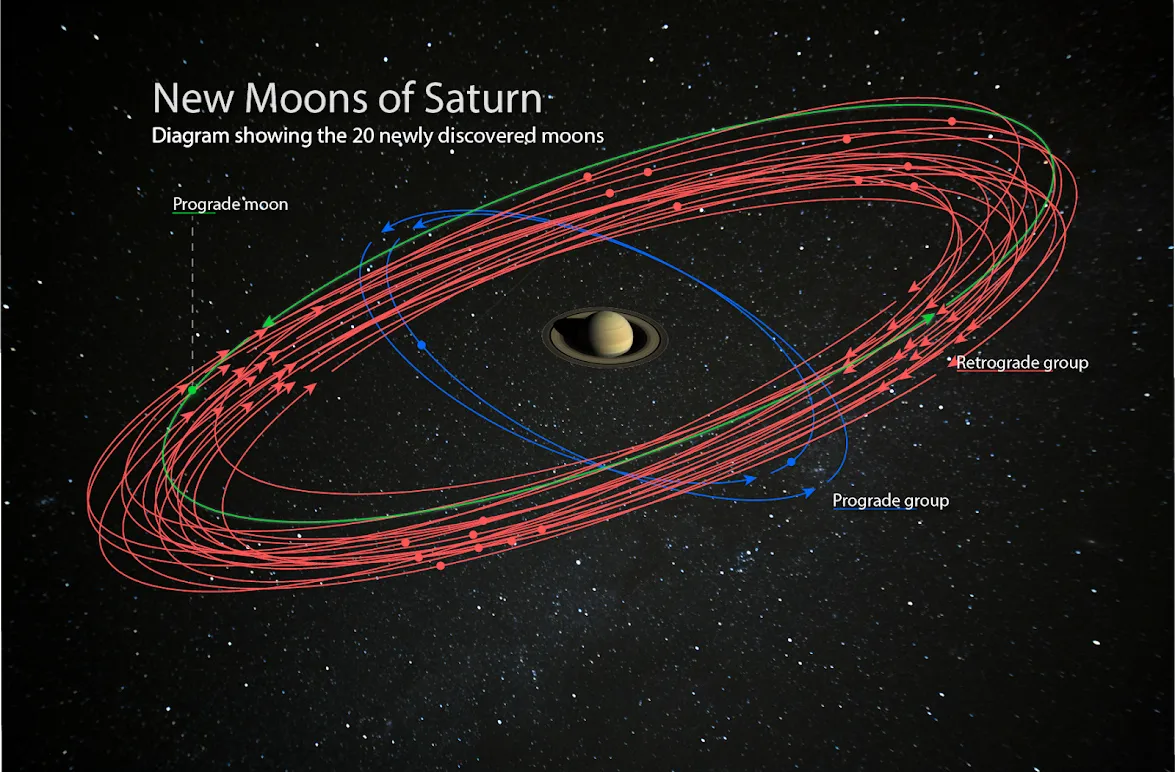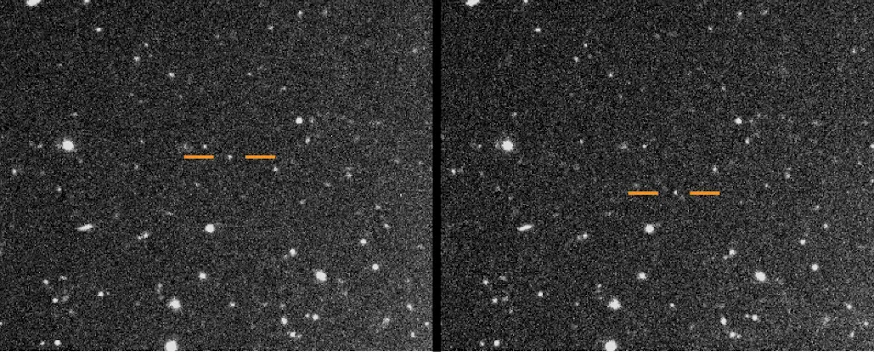20 new moons have been discovered orbiting Saturn, bringing the total number of satellites around the ringed planet to 82 and surpassing Jupiter's 79 moons.The new Saturnian moons are all about 5 kilometres in diameter and 17 of them orbit the planet in a retrograde motion, meaning in a direction opposite Saturn's rotation on its axis.
The other three moons orbit in the same direction as Saturn's spin, known as a 'prograde' motion. Two of these take about 2 years to travel once around Saturn, while the other is the same as the more distant retrograde moons, taking over three years to orbit the ringed planet.
The discoveries were made by a team including Scott Sheppard of the Carnegie Institution for Science in Washington DC, David Jewitt of UCLA and Jan Kleyna of the University of Hawaii.

Sheppard and his colleagues are well-known for their work hunting the hypothesised Planet X: a ninth planet of our Solar System thought to exist beyond the orbit of Neptune.
In 2017 the team made headlines when they discovered 12 new moons around Jupiter.
“Studying the orbits of these moons can reveal their origins, as well as information about the conditions surrounding Saturn at the time of its formation,” Sheppard says.
The newly-discovered moons are already revealing clues about Saturn's history. The outer satellites seem to exist in 3 different groups according to the angles around which they orbit the planet.
Two of the prograde moons mentioned above are part of a group of outer moons with inclinations of about 46°.
These moons could have once existed as a larger moon that broke up around Saturn in the Solar System's distant past.
The newly-found retrograde moons have similar inclinations to other known retrograde moons around Saturn, suggesting they too are fragments of a former large moon that has since broken up.
The third prograde moon has an inclination of about 36°, similar to other known inner prograde moons.
However, the fact that this moon orbits much farther from Saturn suggests it may have been pulled outwards over time, or perhaps it is not related to the inner prograde satellites.

“In the Solar System’s youth, the Sun was surrounded by a rotating disc of gas and dust from which the planets were born. It is believed that a similar gas-and-dust disk surrounded Saturn during its formation,” says Sheppard.
“The fact that these newly discovered moons were able to continue orbiting Saturn after their parent moons broke apart indicates that these collisions occurred after the planet-formation process was mostly complete and the disks were no longer a factor.”
Sheppard and his team are calling on the public to help name these new Saturnian moons. To submit your own suggestion, visit Carnegie Science's website here.
